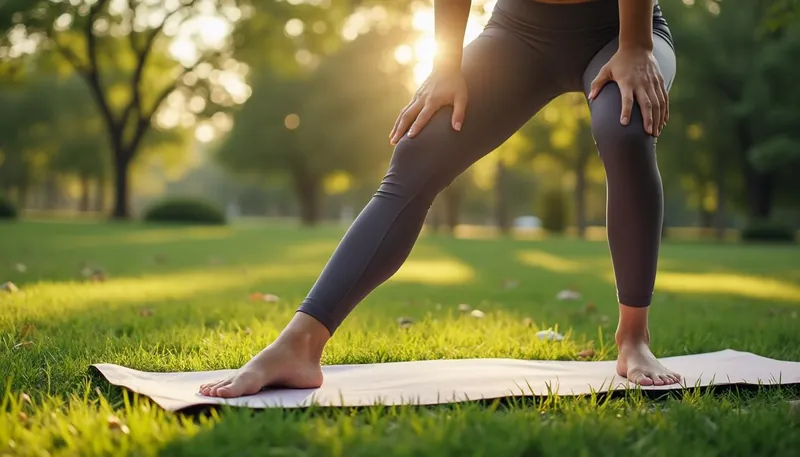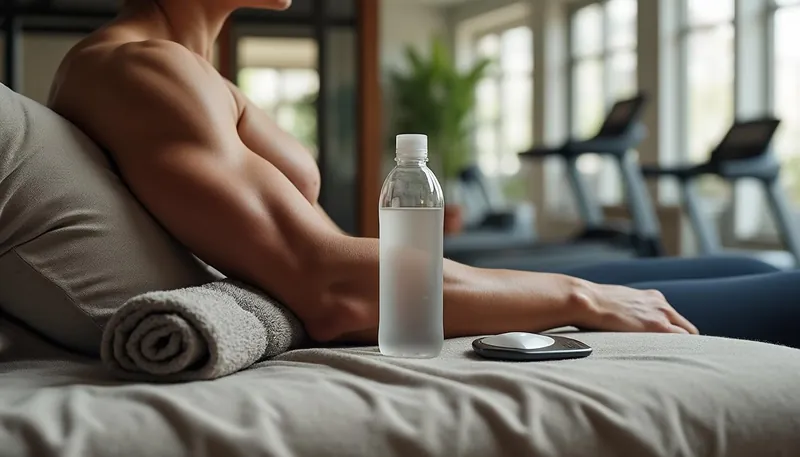Tight hamstrings are a common issue faced by many people, regardless of their fitness levels or lifestyle habits. These muscles can feel like they’re made of rubber bands, pulling painfully on our movements. You might find yourself wincing when attempting basic activities like standing up or bending down. With the ever-increasing prevalence of sedentary lifestyles and strenuous workout regimens, this problem seems to have become even more widespread, particularly in 2025. Knowing how to address tight hamstrings is crucial for better mobility, injury prevention, and overall comfort.
In this article, we take a deep dive into the complexities surrounding tight hamstrings, exploring the root causes, effective stretches, and exercises, as well as how you can prevent this discomfort from becoming a chronic issue. Whether you’re a runner, office worker, yoga enthusiast, or someone who simply likes to stay active, understanding how to relieve tight hamstrings can dramatically enhance your quality of life.
- 🤕 Identify the root causes of tight hamstrings.
- 🧘♂️ Learn effective stretches and exercises.
- 🛑 Discover prevention techniques.
- ✨ Optimize your mobility.
- 🏃♀️ Enhance your fitness routine for better recovery.
Understanding Tight Hamstrings: The Causes and Symptoms
Many people think of tight hamstrings as just a muscle issue, but it’s often rooted in a mix of factors. Let’s unravel this complex predicament. The hamstrings are located at the back of your thighs and consist of three muscles: the biceps femoris, semimembranosus, and semitendinosus. These muscles, while essential for movement, can become tight due to a multitude of reasons.
Some common causes include:
- 🪑 Prolonged Sitting: If you spend long hours sitting, your hamstrings may become shortened and stiff.
- 🏃 Overtraining: High-intensity workouts without sufficient recovery time can lead to muscle fatigue.
- 🧘 Poor Flexibility: Lack of regular stretching can mean your muscles aren’t accustomed to their full range of motion.
- 💔 Injuries or Trauma: Past injuries can lead to compensatory movement patterns that overload the hamstrings.
- ⚖️ Imbalances in Muscle Strength: Weak glutes or hip flexors can transfer undue stress onto your hamstrings.
When you begin to experience tightness, the sensation may often manifest as discomfort or even pain in the back of the thigh. This can interfere with basic activities like walking, bending, or even sitting comfortably. In 2025, recent studies also show that some individuals might experience lower back pain as a secondary symptom of tight hamstrings, highlighting the importance of addressing this issue holistically.
| Cause | Symptoms | Suggested Solutions |
|---|---|---|
| Prolonged Sitting | Stiffness, pulling sensation | Frequent breaks to stand and stretch |
| Overtraining | Fatigue, soreness | Reduced training intensity and proper recovery |
| Poor Flexibility | Tightness during movement | Regular stretching sessions |
| Injuries | Pain during activity | Consult a physical therapist |
| Muscle Imbalances | Compensatory pain | Strengthening exercises for glutes and core |
Effective Stretches to Relieve Tight Hamstrings
When it comes to relieving tight hamstrings, stretching is key! Incorporating effective hamstring stretches can not only alleviate discomfort but also enhance your overall flexibility. A few valuable stretches include:
1. Standing Hamstring Stretch
This simple yet effective stretch can be done anywhere. Stand tall and place one heel on a low surface, like a chair or step. Keeping your back straight, slowly hinge at the hips until you feel a stretch in your hamstring. Hold for 20-30 seconds and repeat on the other side.
2. Seated Hamstring Stretch
Sit on the floor with legs extended in front of you. Slowly bend forward at the waist, reaching toward your toes. Ensure your back remains straight as you stretch. Hold for 20-30 seconds; this stretch is especially beneficial for individuals who sit for prolonged periods.
3. Lying Hamstring Stretch with a Bend
Lay on your back with your knees bent. Raise one leg toward the ceiling while keeping a slight bend in the knee. Use your hands to gently pull your leg closer to your body, feeling the stretch in the back of your thigh without causing any pain.
These stretches can be complemented by yoga poses such as Downward Dog which stretches not only the hamstrings but also the calves and whole back. Integrating these movements into your routine can help you maintain mobility and prevent the tightness from becoming a recurring issue.
Exercises to Strengthen Hamstrings and Prevent Tightness
While stretching is vital for hamstring relief, strengthening exercises are equally important to prevent future tightness. Building strength in the hamstrings works as a supporting mechanism, reducing the occurrences of tightness and discomfort. You can include these exercises into your routine:
- 🦵 Nordic Curls: Kneeling, lower your body towards the ground, using your hamstrings to control the descent.
- 🏋️♂️ Romanian Deadlifts: Focus on hinging at the hips while keeping the back straight to effectively target the hamstrings.
- 🚴 Glute Bridges: This exercise helps strengthen the glutes and reinforces the posterior chain, reducing reliance on the hamstrings.
- 💪 Single-Leg Deadlifts: Balance while working one leg at a time, promoting coordination and strength.
| Exercise | Target Muscle | Benefits |
|---|---|---|
| Nordic Curls | Hamstrings | Targets muscle strength and stability |
| Romanian Deadlifts | Hamstrings, Glutes | Improves hip hinge mechanics |
| Glute Bridges | Glutes, Hamstrings | Enhances lower body strength, posture |
| Single-Leg Deadlifts | Hamstrings, Core | Balances strength and improves agility |
Incorporating these strengthening exercises into your regular workout routine will provide balance and support to your hamstrings, making them less prone to tightness over time. The combination of strengthening and stretching creates a solid foundation for mobility and functionality.
The Role of Lifestyle Changes in Preventing Tight Hamstrings
Addressing tight hamstrings effectively often involves making lifestyle changes as well. Here are a few lifestyle tips to consider:
- 🔄 Incorporate Active Breaks: If you sit for long periods, get up and move every hour.
- 🌳 Include a Variety of Exercises: Alter your routine to include cardio, strength training, and flexibility work.
- 🧘♀️ Focus on Flexibility Training: Prioritize yoga or stretching classes at places like Lululemon or StretchLab.
- 💤 Adequate Rest: Ensure your routine includes recovery time to promote muscle health.
Moreover, utilizing tools like a foam roller from brands like TriggerPoint or Hyperice can offer additional support in loosening tight muscles. A commitment to these changes can lead you not only to the relief of tight hamstrings but also to better overall health and enhanced mobility.
Common Questions About Hamstring Tightness
How long does it take to relieve tight hamstrings?
Relief can often be experienced within a few days to weeks with consistent stretching and strengthening exercises.
Does yoga help with hamstring tightness?
Yes! Poses like Downward Dog and Seated Forward Bend are great for improving flexibility in the hamstrings.
Can dehydration cause hamstring tightness?
Absolutely! Not drinking enough water can lead to stiffness in the muscles, including the hamstrings.
How do I know if my hamstrings are too tight?
Symptoms include discomfort during daily movements and a range of motion limitation in activities like running or bending.
Are there specific brands that provide helpful tools for hamstrings?
Yes, brands like Gaiam, ProStretch, and Adidas offer products that can enhance flexibility and strength.


